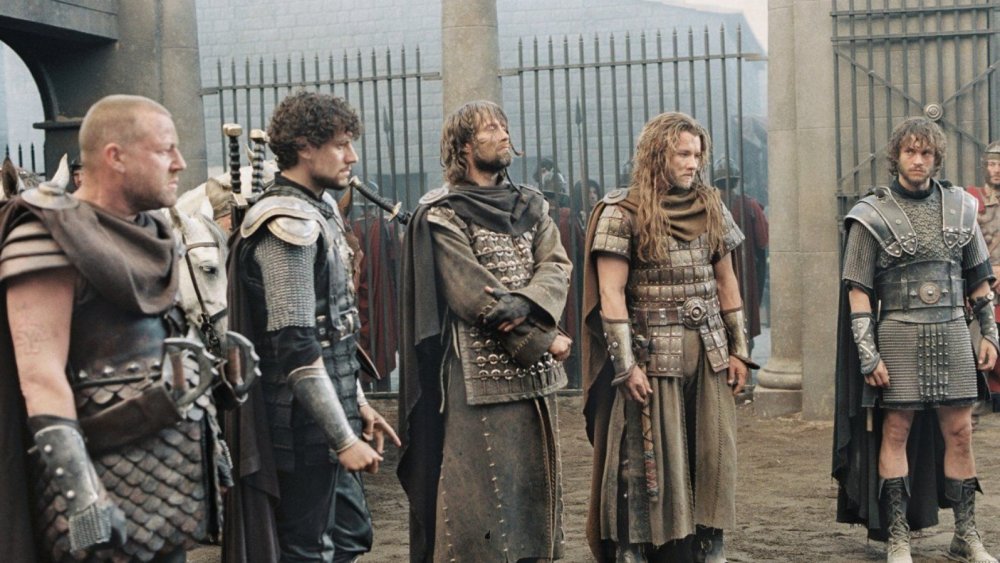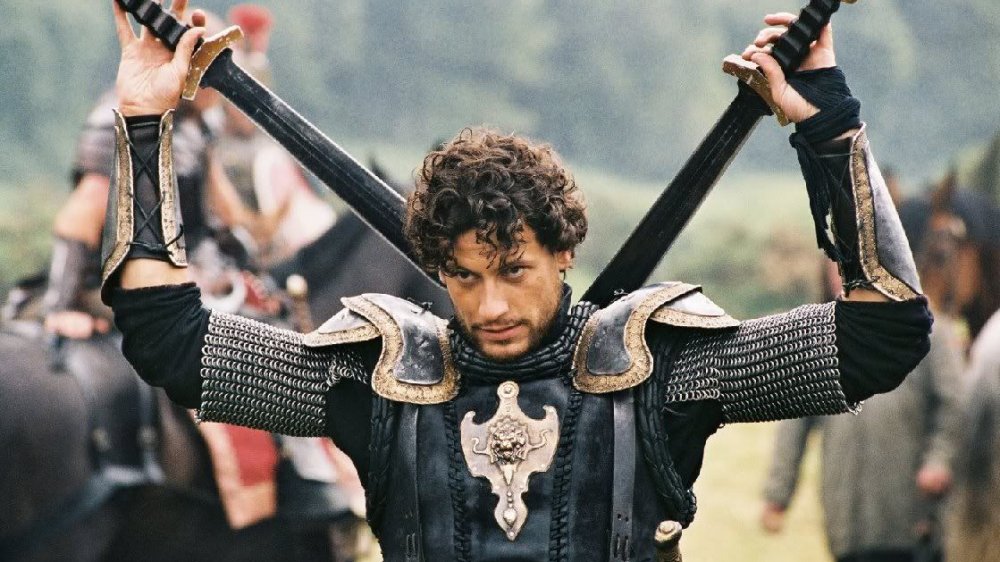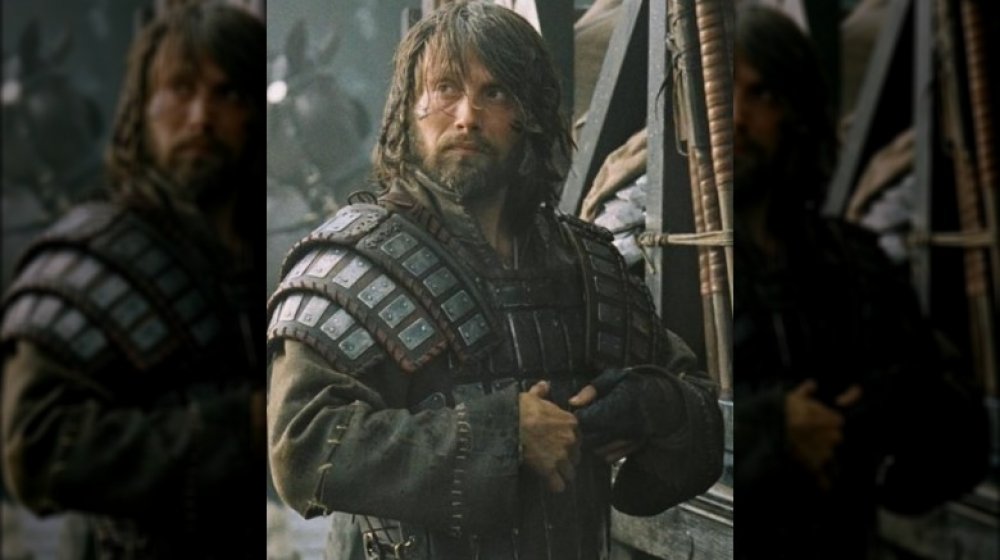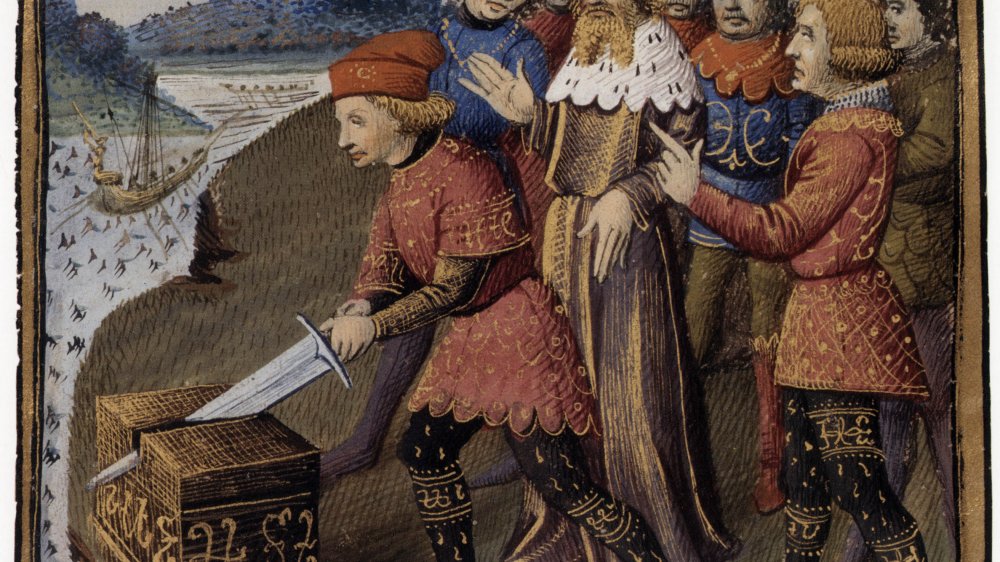Who Were The Knights Of The Round Table?
Arthurian legend has changed a lot over the centuries and barely resembles the original stories. For instance, the early accounts of King Arthur and his knights in History of the Kings of Britain by Geoffrey of Monmouth, written in the 12th century, doesn't include a round table of any kind. Most of what we know about the Knights of the Round Table came from romances years later, beginning primarily with French author Chrétien de Troyes. Wace of Jersey's Roman de Brut, also 12th century, was the first to mention the round table, and the knights' roles from these romances have been basically carved in stone ever since.
Arthur, for example, wouldn't really be considered a knight because he was king and all, but sat at the fabled round table like everyone else. He was the leader in a kingdom that seemed to have elements of democracy, hence the round table. Who would've thought the shape of a table could mean so much? Since the round table was, well, round, there was no head; no man in charge. Though each of the knights that took his seat at the table was considered equal in voice, their stories and personalities were anything but. Well, some of them anyway.
Sir Lancelot was a pretty great warrior and a pretty awful friend. In the more romanticized versions of King Arthur's stories, Lancelot is Arthur's second in command as well as his best friend. Lancelot is also sleeping with Arthur's wife.
Sir Lancelot the adulterer
According to Professor Ad Putter via a History Extra interview, Lancelot wasn't one of the original characters in Arthurian myth but was added in by Chrétien de Troyes, which is kind of crazy since he's the one knight that everyone can actually name.
The reason Lancelot is cheating with Arthur's wife has to do with a common story theme, Putter argues. These stories would interweave the action of battle with the romance of a love affair. We commonly see this with a knight finding strength in some epic sword fight because of the love his woman back home, or the damsel in distress. In this case, for some reason, Chrétien de Troyes decided it would be better to secure Lancelot's story in the image of a backstabbing jerk who happens to be, like, really good with a sword.
Another famous Knight of the Round table was Sir Gawain. He's one of the oldest Arthurian characters, according to Newsweek, and this character is essentially two different people, depending on which time-period and language you're looking at. In the older English stories, Gawain is the upstanding and fiercely loyal knight, as well as Arthur's nephew. The French versions of the stories, on the other hand, decided Gawain should have more exciting elements added to his personality. Our contemporary understanding of Gawain traces back to Thomas Malory's Le Morte d'Arthur, from around 1485.
A knight stolen from another legend
The character loses much of his noble nature and takes on more of an antihero role. He's also a womanizer — two aspects of the character that have lived on in modern retellings of the story, like the 2004 King Arthur film.
The knight Tristan, who's been popular enough to make it into the 2004 film, wasn't originally from the King Arthur stories at all. His character was stolen from his own stories and shoved into Arthur's quest to find the holy grail, as Lancelot's rival. He wasn't a villain, but rather was one of the noblest knights. The two characters were just in competition. Tristan's original story is much older than the written stories that survive today, dating back to the old Celtic legend of Tristan and Isolde, according to Britannica. It's one of those classic knight's tales. Tristan travels a large distance to ask for a princess's hand in marriage — but not for himself; he's asking on behalf of his uncle. He's a good nephew. Tristan, of course, doesn't make it to the princess, Isolde, until after slaying a vicious dragon that's terrorizing the land.
The knight picks up the princess and they start to head home to Cornwall so his king uncle can receive the happy news (she said yes.) Things don't go exactly as planned, as they rarely do for protagonists, and the two accidentally drink a love potion and find themselves bound together forever. Sorry, uncle.
The other Gs
The number of Knights of the Round Table in Arthurian legend changes depending on which story you're reading. One story, a translation of Wace's writing by Layamon, claims that the table held around 1,600 knights, while other stories say it was a dozen. So, yeah, there have been a whole lot of Arthurian knights over the years and, for some reason, they were disproportionately titled with names that begin with the letter G: Gawain, Galehault, Gaheris, Gingalain, Griflet, etc.
The only other G name that's really notable would be Galahad, Lancelot's son, who picks up the knight Percival's quest to find the Holy Grail after his father failed. He only succeeded because he was a pure soul.
The Knights of the Round Table, as a whole, had one greater, collective personality and sense of virtue, making the legends a kind of reinforcement for courtly codes of conduct, like the code of chivalry, according to Arthurian Legends, the website about all things King Arthur. Stories like the legends of King Arthur with his Knights of the Round Table are prime examples of how nobility should behave and helped reign in the violent types of behavior that were often seen in the Middle Ages. Stories and myths have been used in this way for as long as humans have had language, and it's pretty cool that the Knights of the Round Table have been — and continue to be — part of that.



